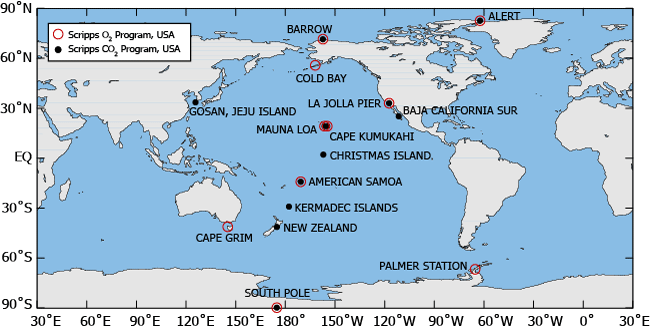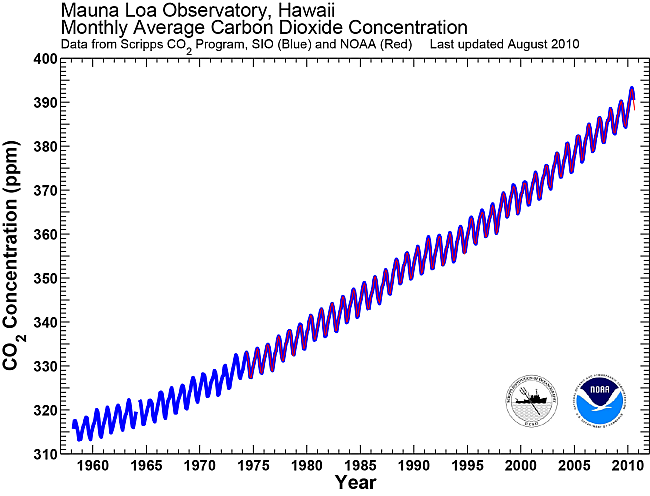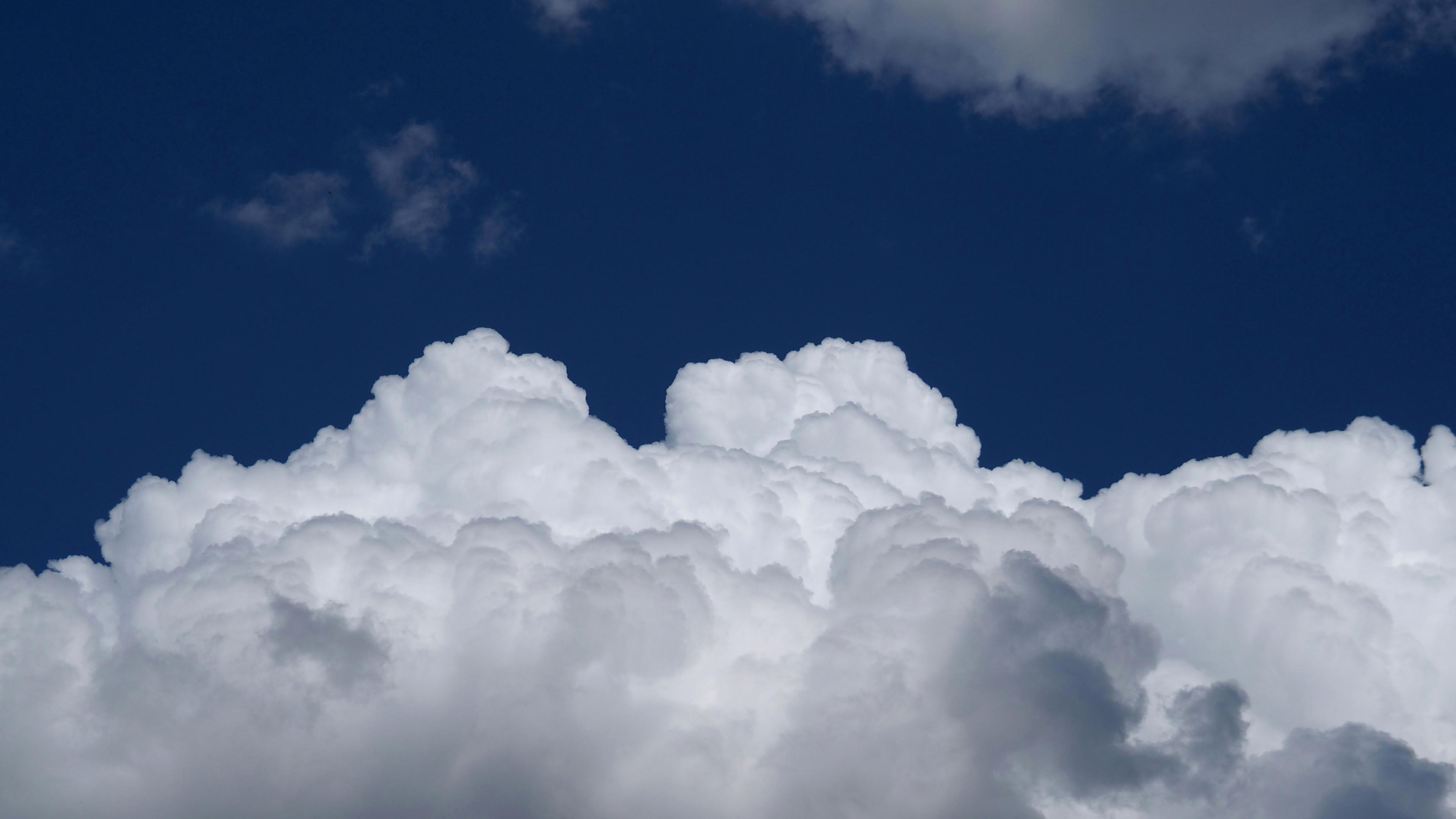Atmospheric CO2
Measurements of atmospheric CO2 concentration in our program began in 1957 at La Jolla, California and at the South Pole, and in 1958 at Mauna Loa Observatory. These measurements were gradually extended during the 1960's and 1970's to comprise sampling at an array of stations from the Arctic to Antarctica.

Solid circles denote locations of stations for flasks collected for CO2 and CO2 isotope measurements. Open circles denote locations of flasks collected for the parallel program Scripps O2 in atmospheric O2 measurements.
The primary (in situ) record from Mauna Loa is based on measurements made with an analyzer at the site. At all other stations, the records are based on flask samples returned to our La Jolla laboratory for analysis. Flasks have also been redundantly collected at Mauna Loa. Isotopic measurements on flask samples of the 13C/12C and 18O/16O ratios of CO2, which we began in 1978, have gradually been expanded to include all stations where we measure the CO2 concentration.
Mauna Loa Record
The increasing amount of CO2 in the atmosphere from the burning of fossil fuels has become a serious environmental concern. Central to this concern is the question whether a rise in CO2 constitutes a peril to humans by raising world temperatures, as many scientists now claim. That a rise in CO2 is occurring is unquestionable, however. Mauna Loa Observatory (MLO) data are providing dramatic evidence of that: they show amounts more than 35% over amounts recorded before the Industrial Revolution, and a rise of 6% in the last 19 years alone.
The first unmistakable evidence of atmospheric CO2 increase was furnished by continuous measurements made at MLO and by measurements of flask samples collected periodically at the South Pole. These data, obtained in connection with the International Geophysical Year (IGY), were precise enough to indicate a rise in concentration in 1959 when compared with the results of the previous year (Keeling, 1960). Further measurements have shown a persistent year-to-year increase.
Over the many decades that the Scripps CO2 program has been in existence, additional programs have joined the effort in making related measurements. The largest and most comprehensive of these is the NOAA-GMD program, which initiated measurements at Mauna Loa and other sites in the 1970s (www.esrl.noaa.gov/gmd/ccgg/trends). Since then, two independent records of CO2 changes have been maintained in parallel at Mauna Loa. The following figure overlays the two records.

